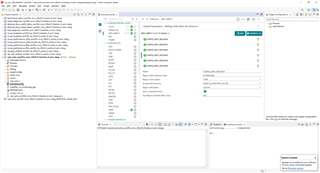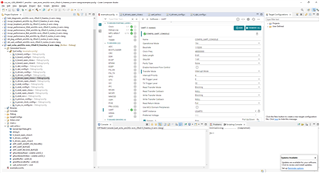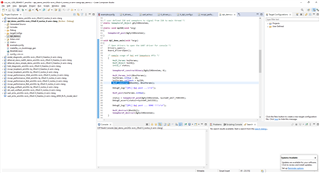Hello,
By default, our project uses TI's SBL to load sysFW to initialize SOC and then jump into our application image. I don't find where the Cache is enabled, or interrupt is enabled.
Would like to understand:
1) Whether the cache (both instruction cache and data cache) is enabled by default? If it is not enabled, how we could enabled the cache?
2) For interrupt, by default which interrupt number is enabled? From library, which function is called to enable interrupt by default? I could see the fault handler actually functions, so I think some interrupt is enabled by default, but I am not sure which are the interrupt numbers are enabled.
Thanks,
Hong




